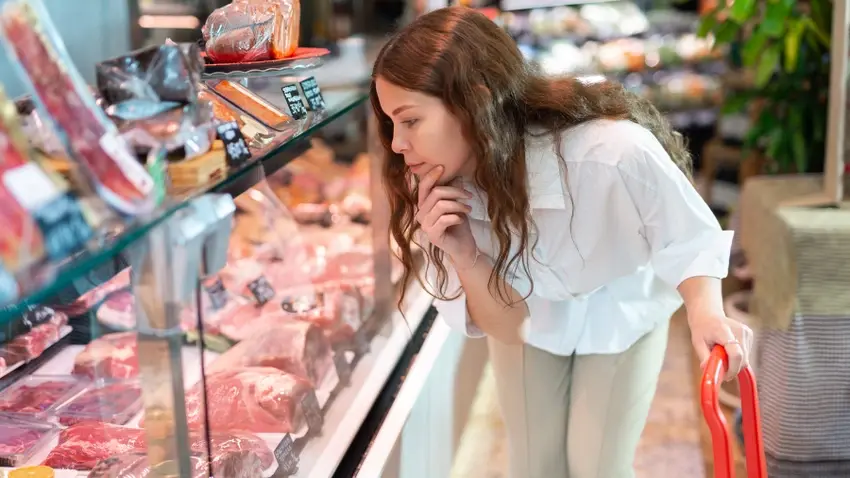The American Farm Bureau Federation (AFBF) released the unedited responses from Vice President...
Kamala Harris’s Grocery Price Proposal: A Disaster in the Making

by Kelly Lester -Policy Analyst for the Center for Food, Power, and Life, John Locke Foundation
Recently, in Raleigh, North Carolina, Vice President Kamala Harris unveiled a controversial proposal aimed at tackling the rising grocery prices that have been squeezing American consumers. Harris’s plan to cap grocery prices in an effort to prevent “price gouging” by large grocery chains may sound appealing to some, but it’s a deeply flawed approach that could backfire disastrously. Let’s break down why this proposal is not only misguided but could also hurt the very people it claims to protect—farmers and consumers.
The Illusion of Corporate Greed
Harris argues that large grocery chains have been unfairly hiking prices, leading to their highest profits in decades. But this narrative of corporate greed is misleading and oversimplified. The reality is that grocery stores operate on razor-thin profit margins, typically between 1-3%. Unlike other retail sectors, where profit margins can be much higher, grocery stores have little room to maneuver. Capping prices could squeeze these margins even further, pushing some stores out of business and leading to less competition and higher prices in the long run.
Farmers Are Already Challenged
The proposal also ignores the fact that many farmers, who supply the very products we find on grocery shelves, are often times challenged to meet their obligations. Farmers are facing rising costs for everything from fuel to fertilizers, coupled with unpredictable weather conditions that can wipe out entire fields of crops. They operate in a volatile market where prices for their products fluctuate, often below the cost of production. By capping grocery prices, Harris’s proposal could put even more pressure on farmers, potentially driving some of them out of business. When farmers can’t cover their costs, it’s not just their livelihoods at stake—our food supply is, too.
The Real Reasons Behind High Food Prices
It’s crucial to understand that the high grocery prices we’re seeing today aren’t primarily the result of greedy grocery companies. In Lester’s recent report, he lays out many of the factors which are driving up costs, none of which are addressed by Harris’s proposal:
- Supply Chain Disruptions: The COVID-19 pandemic severely disrupted global supply chains, leading to shortages and higher costs for everything from packaging materials to transportation. These disruptions have not fully resolved, and the effects are still being felt across the food industry.
- Rising Input Costs: The cost of producing food has risen significantly. Energy prices, for example, have spiked, making it more expensive to run farms and transport goods. Labor shortages and higher wages also add to the cost of getting food from farms to grocery stores.
- Inflation: General inflation has affected all sectors of the economy, including food production. The costs of raw materials, labor, and transportation have all risen, and these increases are inevitably passed on to consumers.
- Climate-Related Challenges: Unpredictable weather patterns, often linked to climate change, have led to poor harvests and reduced yields, driving up the price of food. These challenges are out of the control of grocery chains and are a significant contributor to rising prices.
The Dangers of Price Caps
Implementing price caps on groceries is a simplistic solution to a complex problem. It may prevent prices from rising in the short term, but the long-term consequences could be severe. Price caps can lead to shortages, as grocery stores may no longer find it profitable to stock certain items. This could result in empty shelves and less variety for consumers. Additionally, price caps could discourage investment in the food supply chain, leading to further inefficiencies and higher prices down the road.
Moreover, price controls could inadvertently harm smaller grocery stores that cannot absorb the reduced margins, leading to a consolidation of the market among a few large players. This reduced competition could lead to higher prices in the future, negating the very purpose of the caps.
Conclusion: A Better Approach Is Needed
While it’s understandable that Harris wants to address the pain consumers are feeling at the checkout line, price caps on groceries are not the solution. Instead, policymakers should focus on addressing the underlying issues that are driving up food costs, such as supply chain inefficiencies, labor shortages, and rising input costs. Supporting farmers, reducing regulatory burdens, and improving supply chain resilience would do far more to stabilize food prices and ensure that grocery stores can continue to operate on fair margins without passing excessive costs onto consumers.
In the end, price caps might sound like a quick fix, but they are more likely to create new problems than solve the ones we already face. The focus should be on sustainable, long-term solutions that address the root causes of high food prices, not on politically expedient but economically damaging interventions.
EDITOR’S TAKE:
This is a well written and sound analysis of what would likely happen if price controls were implemented on food. It is not a new idea and has never proven successful in the past. Anyone who lived through the 1970’s can attest to the poor results of similar policies during that era. The author offers some logical and well supported ideas to tackle the real root problem of higher prices for food and other consumable items. As someone who did live through the 1970’s and is trained as an economist, I can confirm that price controls are not the answer, especially if you want to sell more trucks. Controlling farmer/rancher incomes vis a vis price controls upstream, will surely result in fewer sales, not more!








